ARTH100: Unit 9 - The Enlightenment and The Industrial Revolution: Scientific Positivism and Disenchantment (1750 CE - 1850 CE)
1/41
There's no tags or description
Looks like no tags are added yet.
Name | Mastery | Learn | Test | Matching | Spaced |
|---|
No study sessions yet.
42 Terms
The Enlightenment
A European intellectual movement of the 17th and 18th centuries emphasizing reason, nature, and humanity.
It was inspired by the Scientific Revolution and the belief in universal laws.
Placed the citizen rather than churchman at its center
Looked to Ancient Greeks and Romans to understand rights of man, democracy, and the authority of rulers
Able to control destinies by learning from and following the laws of nature
Produced artwork that placed value on moralizing tales and revolutionary spirit inspired by stories of the Ancient
Neoclassical Art
An artistic style marked by an interest in moralizing the classical world and the ideals of the Enlightenment. It favored clearly drawn and modeled forms, with drawing considered more important than painting. History painting was seen as the superior genre.
Romantic Period
Comes in wake on Napoleonic Wars
Napoleon seized power over the many revolutionary factions and united France
Enormous impact on Europe, as he invaded countries including North Africa
Art leaned towards blend of Neoclassical and Romantic history paintings, showing him as a hero
Looted art for the Louvre
Visitors did a ritual of citizenship, tracing a hierarchy in which France was represented as the rightful heir to these earlier traditions, the apex of progress and civilization
Romanticism
An art movement of the 19th century characterized by a rejection of reason and rationalism in favor of passion and emotion. It included diverse subjects like landscapes and current events and embraced the sublime, the Orient, the Gothic, and ruins. It can be interpreted as a direct expression of the artist’s persona or “genius.” Many argue the emphasis on landscape and ruins of a reflection on industrializations impact.
American Landscape Art
Influenced by European picturesque and the sublime
Collected by industrialists, railroad barons, and other financers
Highly tied to Manifest Destiny and displacement of Indigenous People
The Art of Edo Japan
Developed through its own internal innovations and shaped by tradition and the artistic influences of China and Korea
Changed through growth of a middle-class urban culture
Growth in prints, books, and posters
The Picturesque
A concept central to landscape art that celebrates nature as something that looks like a picture. It was promoted by figures like William Gilpin, who described it as irregular and with different textures, creating an interesting view with foreground, middle ground, and background
The Ruin
A motif featuring often in Romantic paintings, serving as a symbol of the passage of time and of melancholy and death. Abbey in the Oak Forest by Caspar David Friedrich exemplifies this.
The Sublime
An expression of overwhelming emotion, sometimes even terror, evoked by powerful emotions that cannot be described.
Hierarchy of Genres
A system where history painting (mythological, biblical, or allegorical) was considered superior, followed by portraiture, genre painting, landscape, and still life.
Jacques-Louis David
An important artist in defining Neoclassicism, known for history paintings like Oath of the Horatii. He was also a favorite painter of Napoleon and an artist of the French Revolution
Francisco Goya
An artist who depicted the brutal reality of war in his series the Disasters of War, focusing on the suffering of those under Napoleonic domination.
J.M.W Turner
A Romantic painter fascinated by the sea and industrialism, often showing an ambiguity towards technology.
Caspar David Friedrich
A German Romantic landscape painter known for low-lying horizons, huge skies, and lonely figures, impacted by the Napoleonic Wars.
Thomas Cole
A British-born artist who found success in America and brought the picturesque, sublime, and romantic to American landscape painting. He was the leader of the Hudson River School, and his work is associated with Manifest Destiny, as seen in View from Mount Holyoke
Photography
Came from interest in realism influenced by scientific ideas and rationalism and desire to document the world
Democratic goal of offering everyone the opportunity
Earliest generally specialists focused on portraits
Slow process and complicated chemistry
Rise of portrait studio and cheaper methods like tintype and the albumen print meant anyone could have their picture taken
Marked by different techniques and tech innovations
Informed by Romantic art and aesthetic concerns
A medium that continues to evolve and shape our culture
Tintype
Photographic process involving wet collodion applied to metal, became favored by poorer people as it was most affordable.
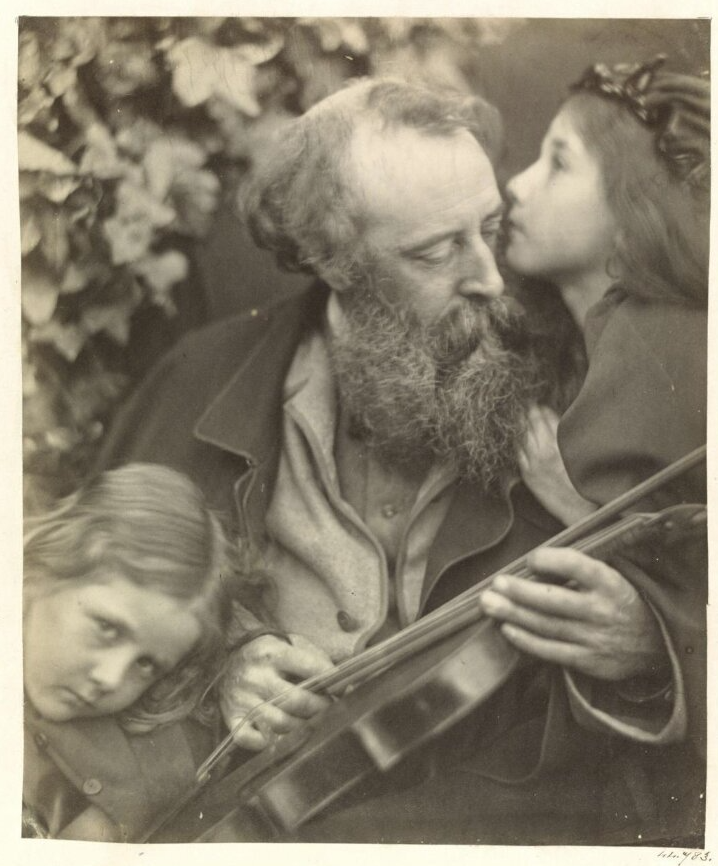
Albumen print
Rich sharp image, used wet collodion glass negatives to create photographs on paper. Used by Julia Margaret Cameron
Daguerreotype
An early photographic process developed in France that produced a unique, one-off photo on silver-plated copper sheet
Calotype
A paper-based photographic process invented by William Henry Fox Talbot that had the potential to produce multiple copies from a negative, though the images were initially less sharp than daguerreotypes.
Cyanotype
A photographic printing process that produces a cyan-blue print, famously used by Anna Atkins for her book Photographs of British Algae
William Henry Fox Talbot
The inventor of the calotype process and author of The Pencil of Nature, an early book of photographs
The French Royal Academy
An institution that controlled French art, aiming to create a distinct French artistic tradition and train local artists. it had a hierarchical structure and differentiated between academicians and guild members. It was dissolved during the French Revolution.
Salons
Officially sanctioned art exhibitions, like the Paris Salon, where artists annually exhibited their work. Membership in art academies and success in Salons were crucial for an artists career
Colonialism
A practice of domination, which influenced the Romantic art with an interest in the Orient and the exotic, including Indigenous peoples. The picturesque was also used by colonial powers to render foreign places into something familiar.
Industrialization
The expansion of power-driven machines leading to more commodities. Many have argued that the emphasis on landscape and ruins in the Romanticism is a direct reflection of the social and geographical impact of industrialization.
The French Revolution
A period of upheaval that significantly impacted art. It led to the questioning of authority, the destruction and looting of art, and the eventual opening of the Louvre to the public, making art more accessible. The revolution also inspired Neoclassical art with its emphasis on civic virtue and sacrifice.
The Napoleonic Empire
Napoleons reign had a profound impact on Europe, leading to wars and the looting of art for the French national museum. Art of the Empire often blended Neoclassical and Romantic styles, portraying Napoleon as a hero. His defeat at Waterloo also contributed to the rise of Romanticism and explorations of trauma in art.
Portraiture in the 18th Century
Before photography, portraiture served to document appearance and social status, as well as demonstrate the artists imagination. It also helped promote Enlightenment ideals. Different styles emerged across Europe, reflecting social and cultural ideals.
Landscape painting in the Romantic Period
Arose in importance during Romanticism, sometimes reflecting regional identity and often imbued with symbolic meaning related to the sublime, the picturesque, and the ruin. Many see the emphasis on landscape as a reflection of the impact of industrialization
Photography’s connection to the Enlightenment
Interest in realism, veracity, and scientific rationalism, also reflected a democratic ideal of making picture-making accessible to everyone
Impact of photography
altered material and visual culture by providing a new way to document the world and create images. It led to the rise of portrait studios and cheaper methods, making portraits accessible to a wider population. It also contributed to a growing fascination with realism and documenting different cultures.
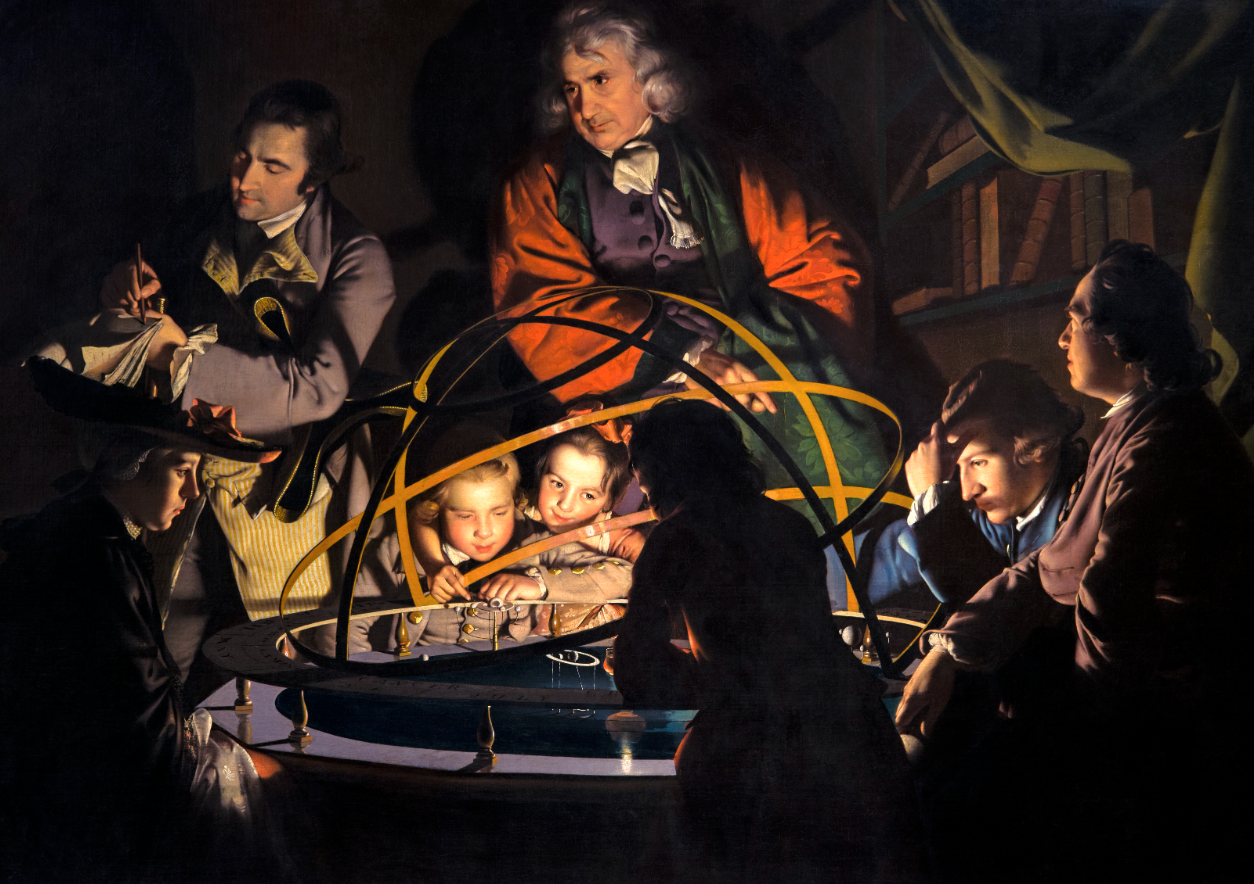
Joseph Wright of Derby, A Philosopher Giving a Lecture at the Orrery
Represents the flowering of science and philosophy during the Enlightenment. The use of chiaroscuro is a visual metaphor for the Enlightenment, and the scene depicts an experiment being observed by people of different ages and genders, highlighting a new emphasis on the scientific and industrial
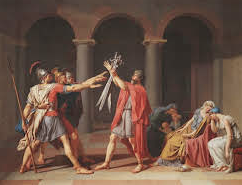
Jacques-Louis David, Oath of the Horatii
A pivotal work in defining Neoclassicism. As a history painting, it depicts a Roman legend emphasizing patriotism and sacrifice. The painting was transfixing at the Paris Salon and is seen as a revolutionary work that influenced French art and foreshadowed political change.
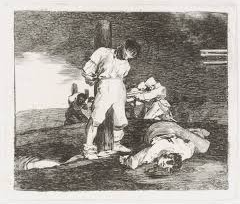
Francisco Goya, And There’s Nothing To Be Done, The Disasters of War
Depicts the violence and suffering caused by the Napoleonic Wars from the perspective of the conquered. Unlike the heroic portrayals of Napoleon in France, Goya focused on the grim realities of war.
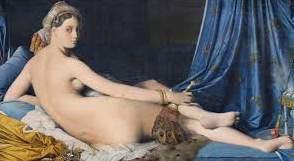
Jean-Auguste-Dominique Ingres, La Grande Odalisque
Ushers in a romantic approach to orientalism, reflecting Western European fascination with the Middle East and North Africa spurred by Napoleons campaigns. It depicts an exoticized and sensualized view of a woman in a harem setting
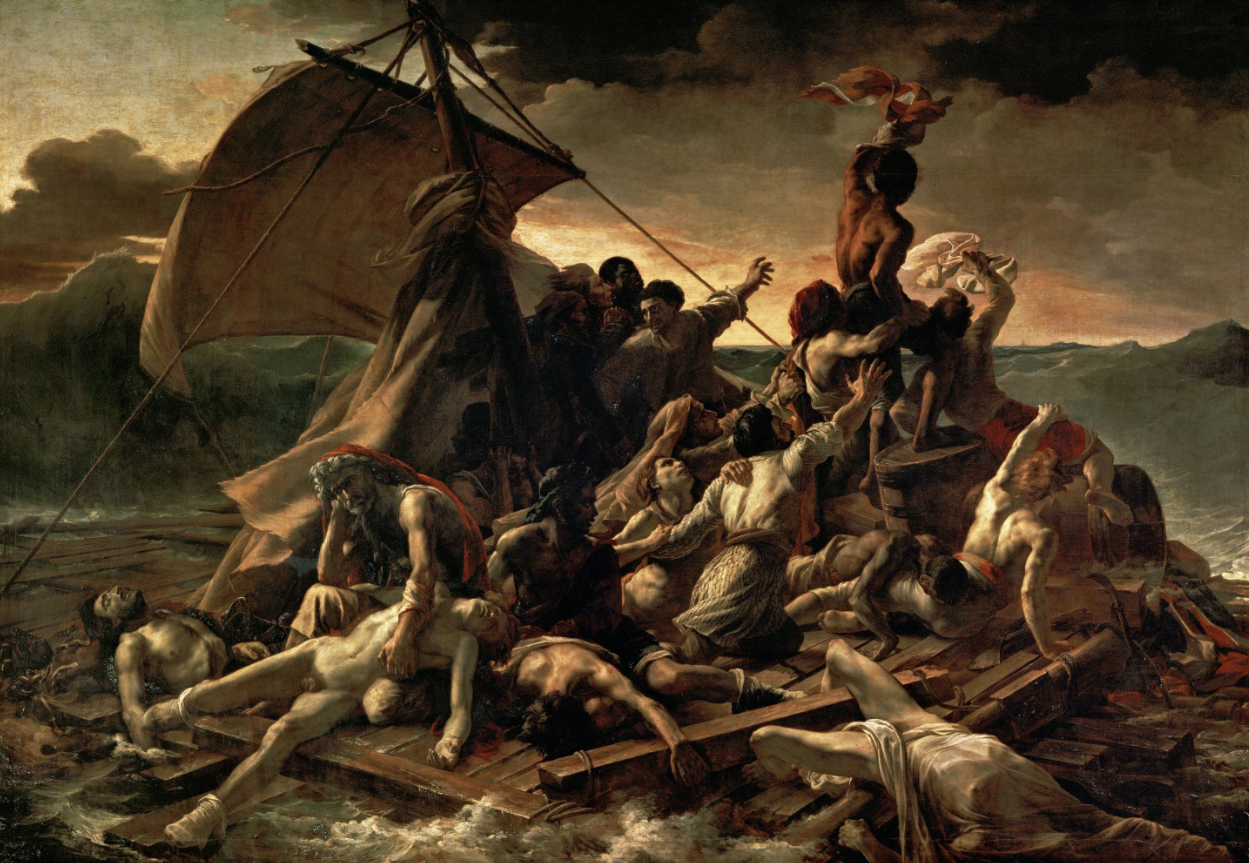
Theodore Gericault, Raft of the Medusa
Massive and powerful painting depicting a contemporary political scandal. It symbolizes the incompetence of the restored monarchy following the Napoleonic Wars and showcases the intertwined figures signaling for rescue.
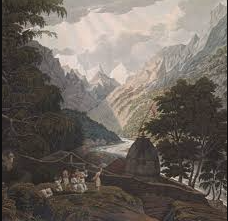
Hindu Pilgrimage Plate from James Fraser’s View in the Himala Mountains
Exemplifies how the picturesque aesthetic was employed by colonial powers, specifically the East India Company, to render new landscapes in a familiar manner. This print depicts a significant pilgrimage site in the Himala Mountains, considered a central location in Hindu culture and the seat of Shiva. This work merges scientific topographical accuracy with a romantic portrayal of the Hindu people engaged in prayer.

Caspar David Friedrich, Wanderer above the Sea of Fog
Romantic painting features a figure (Ruckenfigur) with his back to the viewer contemplating a vast and sublime landscape. It presents an intellectual challenge to the picturesque, inviting the viewer to identify with the solitary figure and contemplate the infinite beauty of the world.
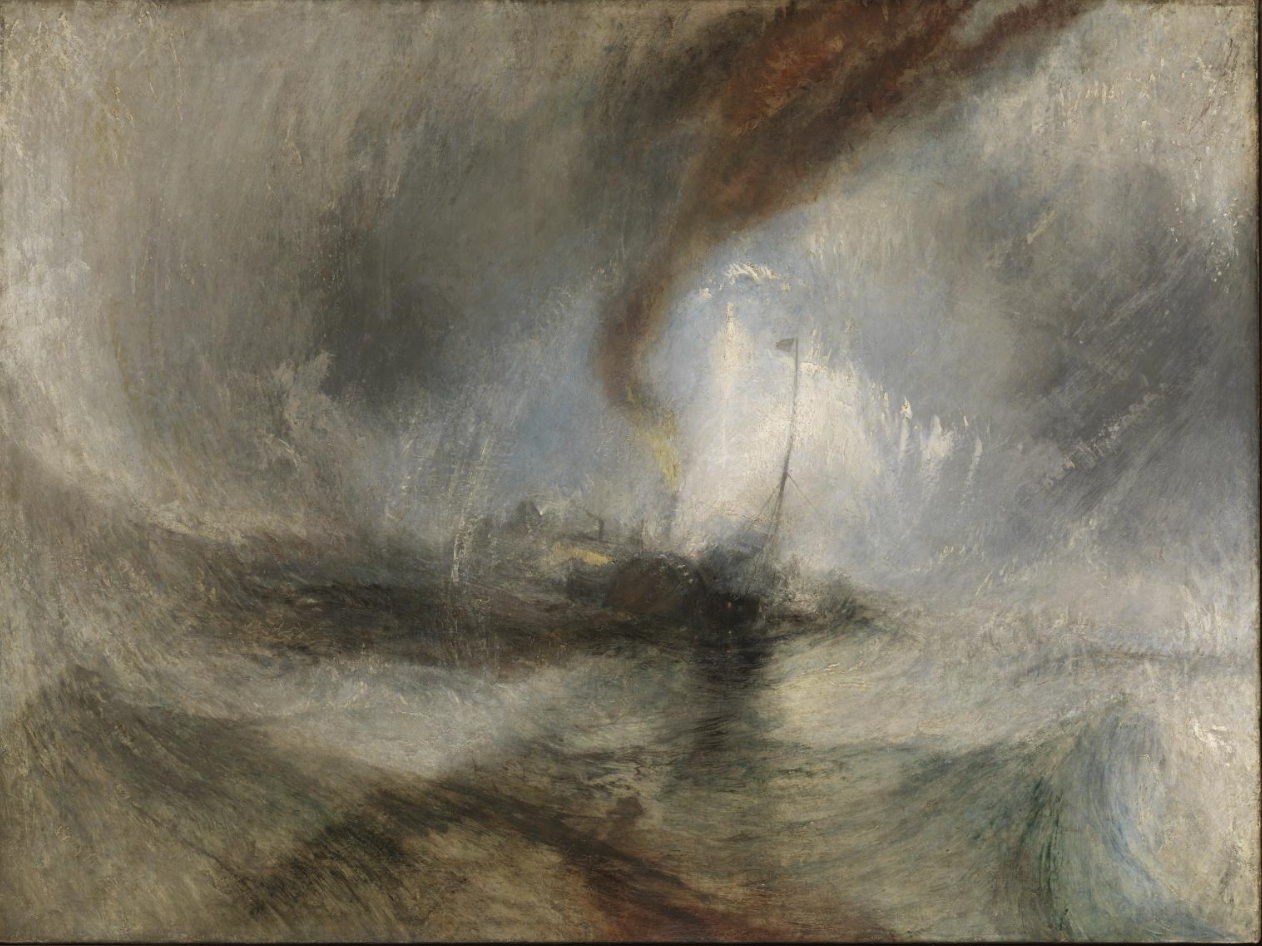
James Mallord William Turner, Snow Storm- Steamboat off a Harbour’s Mouth Making Signals in Shallow Water, and going by the Lead
Demonstrates artists deep fascination with the sea. It illustrates how his artistic style transitioned from tight and controlled to a proto-modernist, loose, and impressionistic style. The mark-making in this work is specifically used to express the immense power of nature.
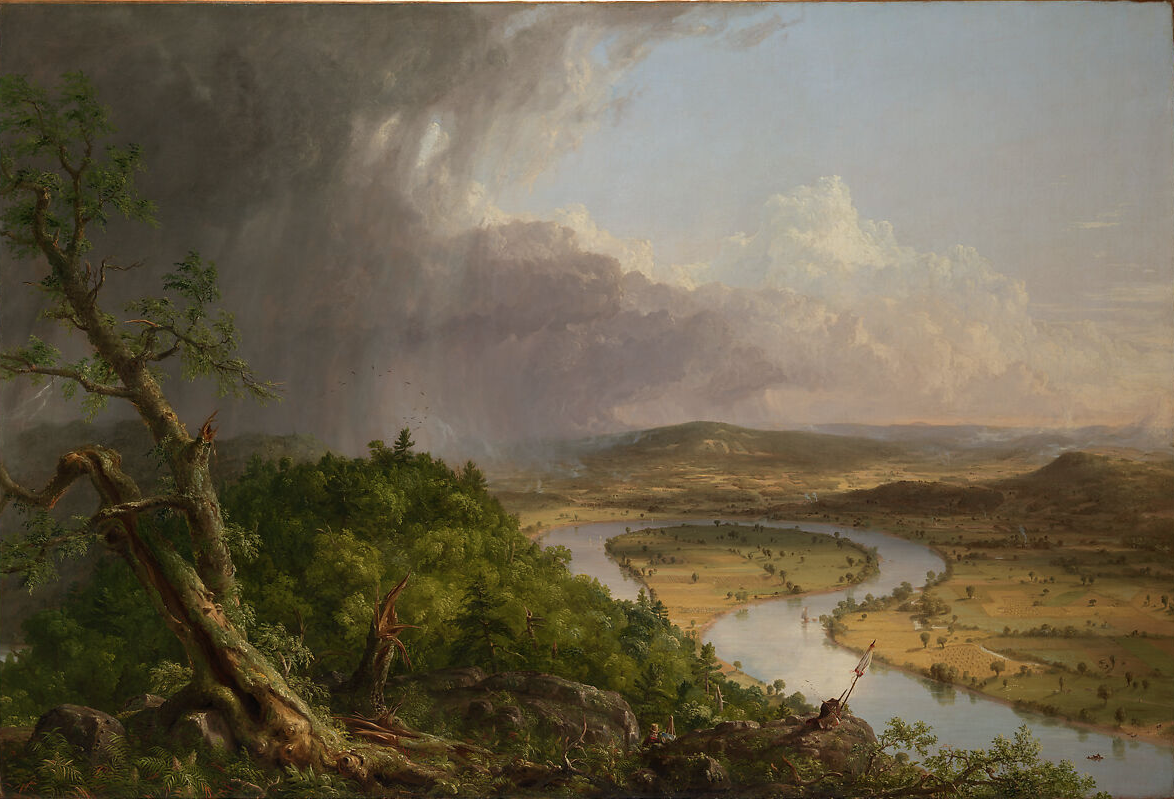
Thomas Cole, View from Mount Holyoke, after a Thunderstorm
American landscape painting exemplifies the picturesque and the sublime in the American context. It is also associated with Manifest Destiny, contrasting the wild, sublime left side with the tamed, pastoral right side, with a suggesting of the displacement of Indigenous people.

Paul Kane, Running Buffalo
Inspired by George Catlin, embarked on an adventure with the aim of learning about Indigenous people. Upon his return to Toronto, he authored a book and transformed his sketches into a series of artworks. During his travels, encountering over 30 Indigenous nations.